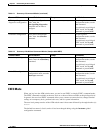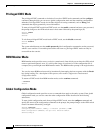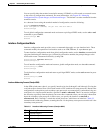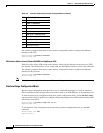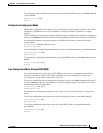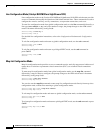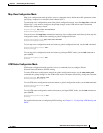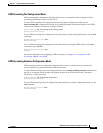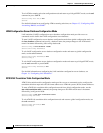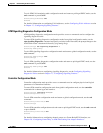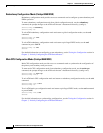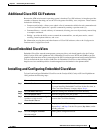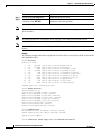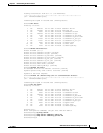
2-12
ATM Switch Router Software Configuration Guide
OL-7396-01
Chapter 2 Understanding the User Interface
Accessing Each Command Mode
PNNI Node Configuration Mode
The PNNI node configuration mode is a submode of ATM router configuration mode and provides access
to commands you use to configure PNNI nodes on the ATM switch router.
To enter PNNI node configuration mode from ATM router configuration mode, use the node command
followed by a node index; the prompt changes to the ATM switch router’s hostname followed by
(config-pnni-node)#:
Switch(config-atm-router)# node 1
Switch(config-pnni-node)#
To exit PNNI node configuration mode and return to ATM router configuration mode, use the exit
command:
Switch(config-pnni-node)# exit
Switch(config-atm-router)#
To exit PNNI node configuration mode and return to privileged EXEC mode, use the end command or
press Ctrl-Z:
Switch(config-pnni-node)# end
Switch#
For detailed information on configuring PNNI nodes, see Chapter 11, “Configuring ATM Routing and
PNNI.”
PNNI Explicit Path Configuration Mode
The PNNI explicit path configuration mode provides access to commands used to manually configure
fully specified or partially specified paths for routing soft permanent virtual channel (soft PVC) and soft
permanent virtual path (soft PVP) connections.
To enter the PNNI explicit path configuration mode from global configuration mode, use the atm pnni
explicit-path command followed by an explicit path name or path-id number; the prompt changes to the
ATM switch router’s hostname followed by (cfg-pnni-expl-path)#:
Switch(config)# atm pnni explicit-path name newexplicit-path
Switch(cfg-pnni-expl-path)#
To exit PNNI explicit path configuration mode and return to global configuration mode, use the exit
command:
Switch(cfg-pnni-expl-path)# exit
Switch(config)#
To exit PNNI explicit path configuration mode and return to privileged EXEC mode, use the end
command or press Ctrl-Z:
Switch(cfg-pnni-expl-path)# end
Switch#
For detailed information on configuring PNNI explicit paths, see Chapter 10, “Configuring ATM
Routing and PNNI.”




